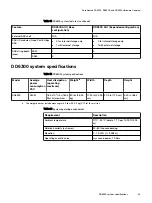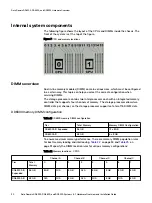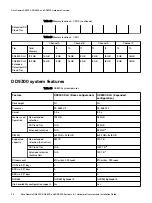
Table 13 DD6800 and DD9300 I/O module slot mapping (continued)
Tier
Slot 0
Slot 1
Slot 2
Slot 3
Slot 4
Slot 5
Slot 6
Slot 7
Fibre
Channel
Fibre
Channel
DLH High
Availability
NVRAM
8g Model
3
Quad
Port 10
GBase-T
for HA
interconn
ect
Quad Port 6
Gbps SAS
Quad Port
10GbE SR,
Quad Port
10 GBase-T,
or Dual Port
16 Gbps
Fibre
Channel
Quad Port
10GbE SR,
Quad Port 10
GBase-T, or
Dual Port 16
Gbps Fibre
Channel
Quad Port
10GbE SR,
Quad Port
10 GBase-T,
or Dual Port
16 Gbps
Fibre
Channel
Quad Port
10GbE SR,
Quad Port 10
GBase-T, or
Dual Port 16
Gbps Fibre
Channel
Quad Port 6
Gbps SAS
I/O module population rules
DD6300, DD6800, and DD9300 systems have eight slots for I/O modules. Slots 0, 1, 2,
and 7 are reserved. Slots 3, 4, 5, and 6 support host interface I/O modules. The
maximum supported number of any type of host interface I/O module is four.
Note
A maximum of three Quad Port 10 GBase-T I/O modules are supported in slots 3-6
because of the mandatory Quad Port 10 GBase-T I/O module in slot 1.
The following table assigns rules for populating the I/O modules.
Table 14 I/O module slot population rules
Step
I/O module name
Slots
Notes
Step 1: Populate
mandatory I/O
modules
NVRAM 8g Model 3
0
Mandatory for all
configurations
Quad Port 10 GBase-
T
1
Mandatory for all
configurations
Quad Port 6 Gbps
SAS
2
Mandatory for
DD6800 and DD9300
DLH. This slot is
reserved for DD6300
configuration.
Quad Port 6 Gbps
SAS
7
Mandatory for all
configurations except
DD6300. Reserved in
DD6300 for base
configuration.
Step 2: Populate all
Quad Port 10GbE SR
I/O modules
Quad Port 10GbE SR
3, 4, 5, 6
Populate starting
from the lowest
available slot number.
Step 3: Populate all
Quad Port 10 GBase-
T I/O modules
Quad Port 10 GBase-
T
3, 4, 5, 6
Populate starting
from the lowest
available slot number.
Data Domain DD6300, DD6800, and DD9300 Hardware Overview
24
Data Domain DD6300, DD6800, and DD9300 Systems
6.1
Hardware Overview and Installation Guide
















































